World 🢖 Asia 🢖 India 🢖 Tamil Nadu
Jain shrines 🢔 Religious architecture 🢔 Archaeological wonders 🢔 Categories of wonders
Wonder
Sittanavasal Cave (Chithannavasal Cave) and Eladipattam
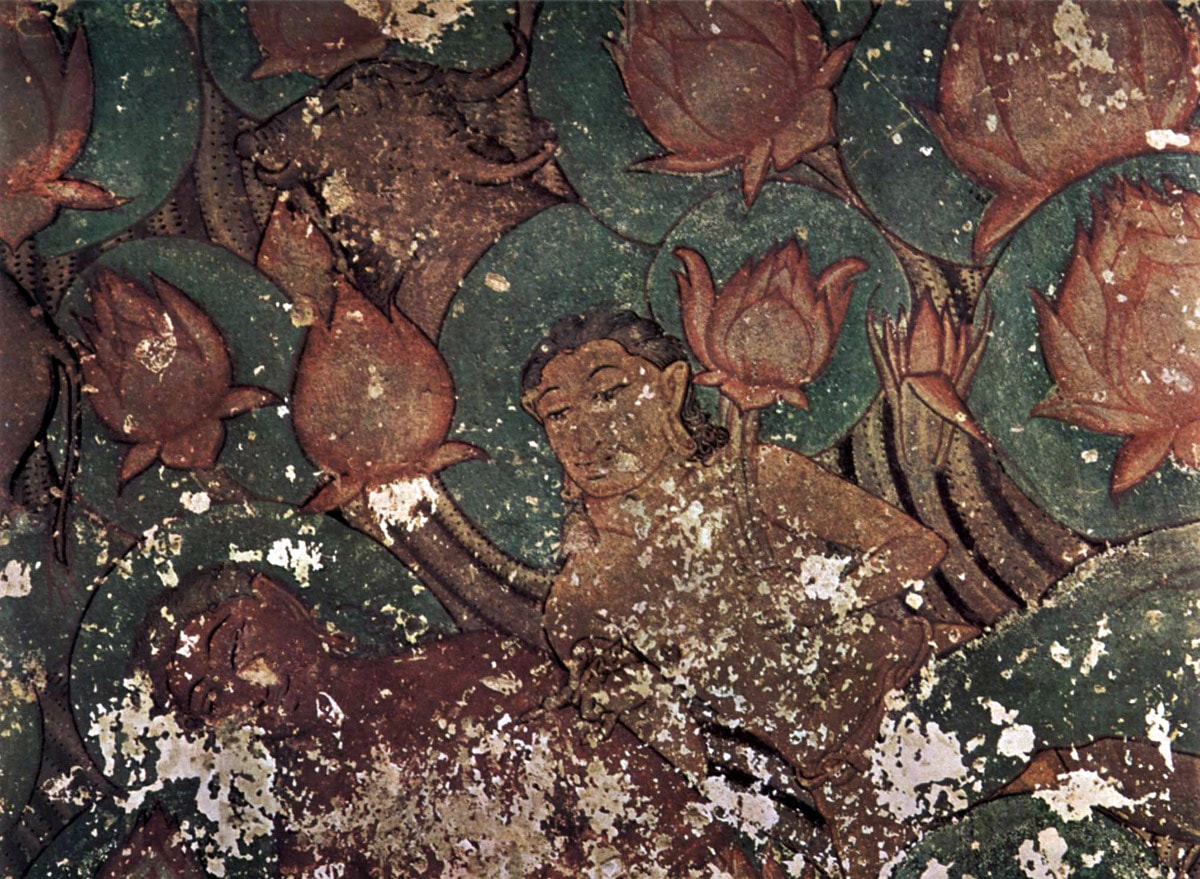
 In short
In short
Some of the best cave paintings of medieval India are located in Sittanavasal Cave in Tamil Nadu. This rock-cut Jain monastery contains artwork comparable to famous murals in Ajanta Caves and Bagh Caves. Paintings were made in frescoe technique.
 46.3%
46.3%
GPS coordinates
Location, address
Alternate names
Age
Religion
Map of the site
If you see this after your page is loaded completely, leafletJS files are missing.
 In detail
In detail
Sittanavasal rock-cut cave is located on prominent rock which rises up to 70 m high over the surrounding plain. This site is very rich with exciting archaeological monuments.
The name “Sittanavasal” has several explanations. One states that this is a distorted version of “chir-ran-nal-vaa-yil” meaning in the Tamil language “the abode of great saints”. Another states that this was a suburb of Annalvayil (chiru-annal-vaayil – “smaller Annalvayil”.
Eladipattam
The painted rock-cut temple is a newcomer in the ancient Jain center of Sittanavasal. To the south, on the top of the hill, there is a natural shelter which is known as Eladipattam (also Ezhadippattam). It served as a Jain shelter since the 1st century BC.
Eladipattam got its name from seven holes cut in the rock – they serve as steps to ascend the shelter. Inside this cave, there are seventeen polished stone berths aligned into rows, each with a raised part – most likely these were beds for Jains with “stone pillows”.
The largest of these ascetic beds contains an inscription in Brahmi script, Tamil language from the 1st century BC. Some more inscriptions in the Tami language are from a much later time – the 8th century AD. These inscriptions name mendicants – monks, for example – Tolakunrattu Kadavulan, Tirunillan, Tiruppuranan, Tittaicbaranan, Sri Purrnacandlan, Nityakaran Pattakali. Most likely these people spent their lives in isolation on this hill.
Eladipattam served as a site of very severe penance – kayotsarga (meditation in standing posture until salvation) and sallekhana (fasting until death).
Unfortunately, most ancient inscriptions are covered with recent writings of vandals.
This stone shelter continued to be the “Holy Sramana Abode” until the 7th – 8th century AD.
Arivar-Koil
The famous paintings are located in a later rock-cut temple named Arivar-Koil (temple of the Arhats) on the north-western side of the rock. This temple has been cut in the rock in the 7th – 9th c. AD.
The facade of the temple is simple, with four rock-cut columns and one pilaster to the right. This construction is new, from the 20th century, built using the details from other monuments of architecture.
Temple consists of forepart – and hall – ardha mandapam (Ardhamandapam) and a smaller cell – sanctum sanctorum (garbha griham) – at the rear wall. It seems that in Pandya times there was added also another forepart – mukha mandapam, which later collapsed.
The forepart contains an inscription on the right side – Tamil inscription with 17 lines. It tells about Jain Ilan-Gautaman who repaired or renovated the ardha-mandapam during the reign of king Srimaran-Srivallabhan (815 – 862 AD).
After several steps, one passes by two columns and enters the ardha mandapam. It is 7 m wide and 2.3 m deep. The ceiling is approximately 2.6 m high. The left wall of this hall contains an image of Parsvanatha (the 23rd Thirtankara), the right wall – an image of acharya – Jain teacher.
At the rear wall, after several steps, one reaches another chamber – garbha griham.
The hall contains the main treasure of this monument – ancient paintings on ceilings and the top part of columns. Paintings are also on the ceiling of garbha griham.
Originally the whole interior of the temple including the sculptures was plastered and painted. Unfortunately, the paintings on the walls have been lost.
Temple and paintings in it were noticed in the early 20th century by S.Radhakrishna Iyer, a local historian and he described this wonderful discovery in a book devoted to interesting sites of his region. The wider scientific community though learned about frescoes later, after 1920.
Frescoes
Most paintings are made in the Pandyan period – the 9th century AD.
The central and most important drawing is a pond with lotuses, flowers in the pond are collected by monks, ducks, swans, fishes, and animals in the pond. This scene shows Samava-sarana – important scene in Jain religion. Samava-sarvana is a special, beautiful audience hall where Tirthankaras (great liberated souls in the Jain religion) delivered sermons after they reached realization (kevala-gnana). Bulls, elephants, apsaras, and gods gathered in this audience hall to witness this grand scene.
Other paintings are floral patterns.
Tops of columns contain drawings of dancing women (apsaras) with lotuses. One of the pillars contains also a drawing of the couple. These drawings have been carried out with outstanding talent. The southern pillar contains drawings of the king and queen with an umbrella over them.
Most likely the colors initially were vivid, now they are more grey. The technique of the drawing shows a well-developed style of art. India has a long tradition of painting on the rock with many Neolithic and later paintings in natural caves.
The walls of Sittanavasal Cave are not very even and thus the plaster has different thickness – from 1 to 8 mm. The first layer of plaster contains coarse sand, second is finer – this is similar to the technique of European frescoes. The pigment was mixed with the lime and possibly some gum (in the black pigment) as well. The color was put on dry plaster. It adhered to the plaster extremely well – persisting more than 1000 years. Medieval artists had deep knowledge (which is lost now) about the natural pigments – colors did not bleach when mixed with lime and very well withstood the test of time. Artists in Sittanavasal have used black, green, yellow, orange, blue, and white pigments.
Damp air in the cave facilitated the growth of slime consisting of algae and lichen – throughout the centuries it covered the paintings. This slime had to be removed mechanically – with strong brushing in 1942 (Shri S.Paramasivan, K.R.Srinivasan) – happily, paintings withstood this well.
Unfortunately, the extremely valuable cave paintings have been vandalized. Some of the damage was done by… contemporary artists secretly copying the paintings by laying tracing paper over the ancient paintings and redrawing them. As a result nowadays the paintings are barely visible and even somewhat insignificant.
Garbha griham
Garbha griham is a small square chamber, 3 m wide and deep, with a 2.3 m high ceiling.
The rear wall contains sculpted images of three figures – possibly two Thirtankaras and acharya.
On the ceiling there is carved a wheel – Dharma chakra – wheel of law. Ceiling also contains frescoes – intricate carpet design and also a scene of Samava-sarvana with lotus pond.
The small shrine has exceptional, unique echo effect: if one is humming “ohmmm” inaudibly, the room starts echoing in audible frequences. This effect is not happening if one is humming audibly.
Surroundings
Sittanavasal is one of the important ancient Jain centers in this region of India and there are many more interesting monuments of Jains and also Hindu. Some are listed below:
- To the south from Arivar-Koil there are Tamil inscriptions from the 7th – 13th century AD. Written sources mention 7 inscriptions, nowadays 2 could be found.
- Walls of the cliff at the temple are adorned with a few sculpted Jain Thirtankaras.
- In the front of Arivar-Koil in the rock floor there are several holes – some 15 cm wide and 20 cm deep. Possibly these were used to grind the pigments.
- Between Eladipattam and Arivar-Koil, on the eastern slope of rock there is exciting monument – Navach-chunai (Jambunatha’s Cave), small rock-cut temple submerged in a small lake. Some skills in climbing are required to reach it. Near the tarn, there grows an old jambu tree. This is a late Shiva temple with a lingam in the center. Occasionally, for the worship of the temple, the water is removed from the lake.
- At the western base of the hill there is a shrine of village deities including fine terracotta horses.
There are many more ancient monuments around the hill from more ancient past – megalithic burial urns, stone circles, cairns, dolmens, cists from the Iron Age, called mudu-makkal-thaazhi. These monuments are located mainly to the south-west of the hill.
References
- S. Theodore Baskaran. Mural techniques. Mural Painting Traditions in India: Content, Conservation & Challenges. 2008.
- Sittanavasal, Sudharsanam, Pudukottai. (This link opens PDF file!)
Sittanavasal Cave is included in the following list:
 Linked articles
Linked articles

Wonders of India
India is the seventh-largest country in the world by area, and, naturally, such a large area contains a huge amount of exciting attractions…
Wondermondo considers that India is the second richest center of architectural heritage in the world after Europe and maybe no single country in the world can match it in this respect.
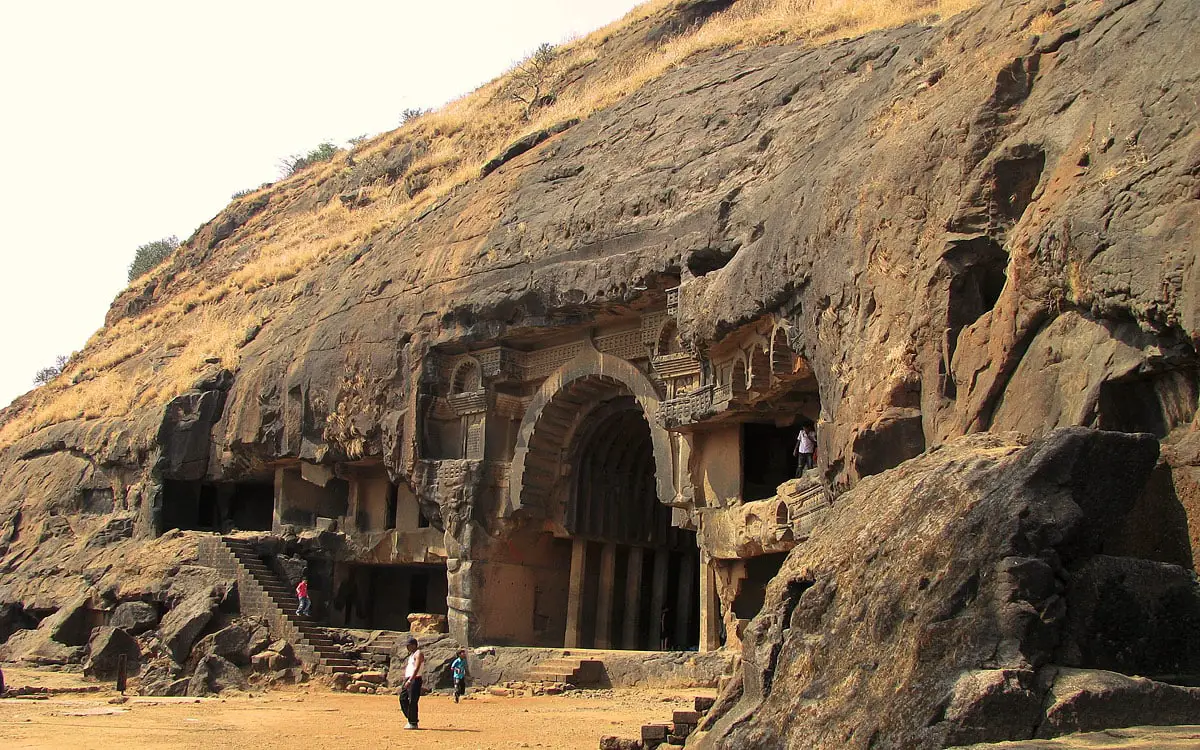
Rock-cut architecture and sculptures
Rock-cut architecture is a very ancient form of architecture – the oldest structures are more than 5 thousand years old. The resistivity of the natural stone and the constant climate inside these structures has preserved many art values around the world.
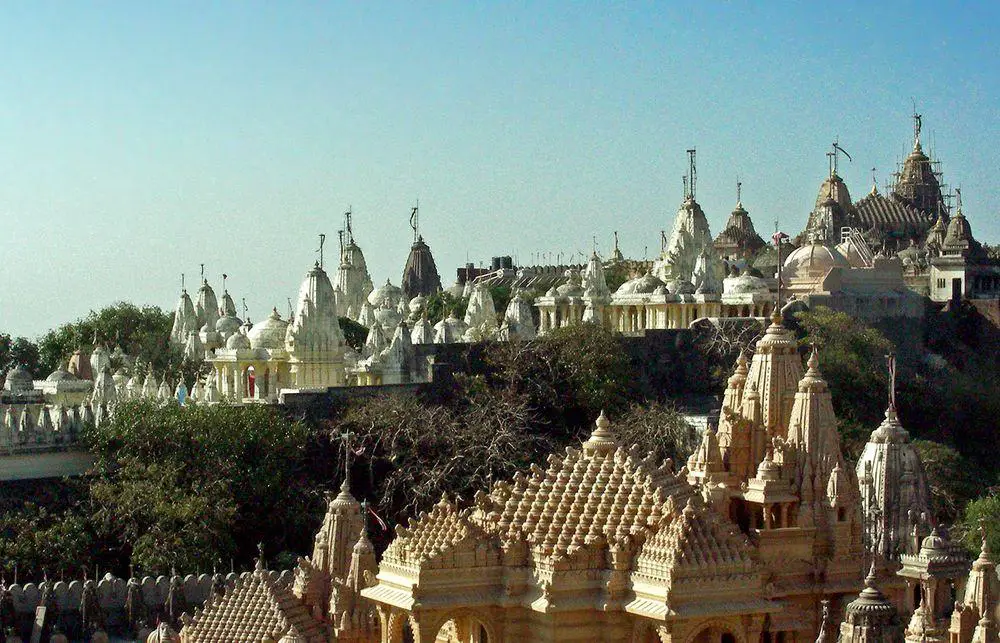
Jain shrines
Jainism originated in India around 840 BC and is well-known as a religion heralding respect and compassion to all living beings of the world and promoting non-violence and constant spiritual development.
Jain temples belong to the most ornate and impressive buildings in the world. In their construction, there are used stones with intricate, refined carvings.
 Recommended books
Recommended books
Indian Painting: From Cave Temples to the Colonial Period
From refined portraits of resplendent maharajas to earthy depictions of divine rogues cavorting with milkmaids, Indian miniature paintings depict the world as it should be: radiant, plentiful, and passionate. These manuscript illustrations combine the vibrant color with exquisite delicacy, offering immediate impact while also rewarding lengthy examination.
History of Tamil Nadu
Tamils have a long history starting from the pre-historic period. Retracing their history is facilitated by various sources. One-third of India’s epigraphical sources pertain to Tamil Nadu and one of the dynasties of Tamil Nadu – the Pandyas – had the privilege of continuous rule from third century B.C. to sixteenth century A.D. It is a unique accomplishment in the annals of history since very few dynasties in the world have reigned for such a long time.

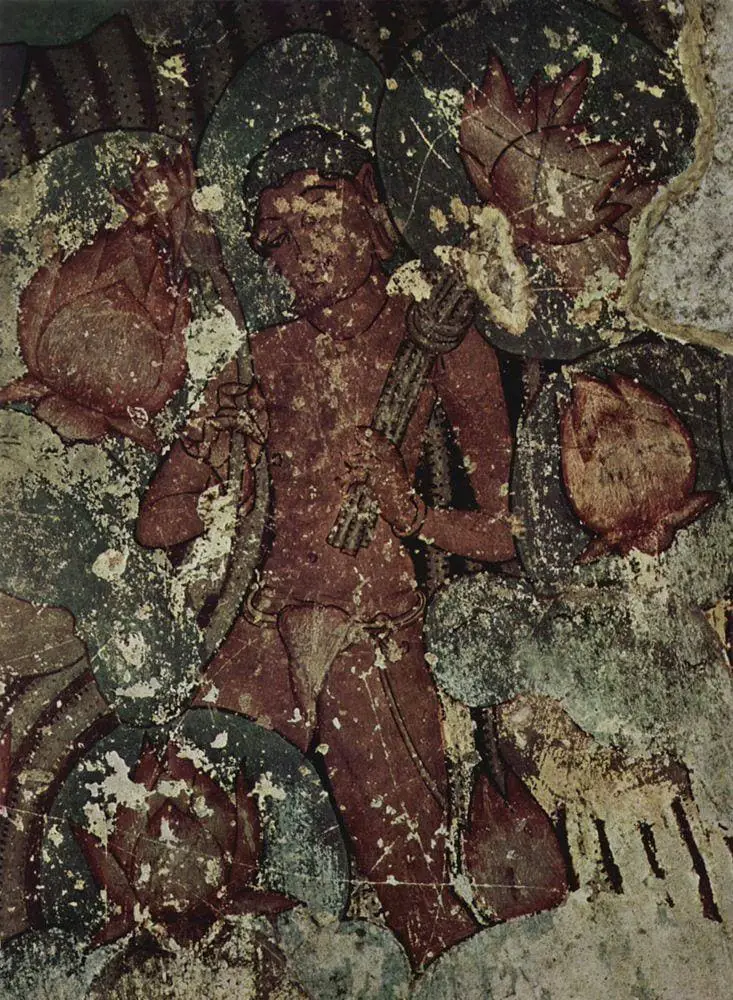
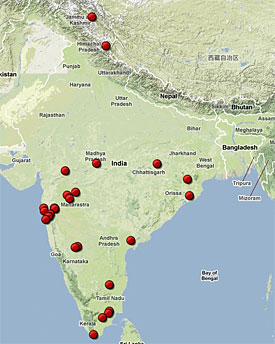


[…] rupestres en las que estás pensando. En cambio, estos adornan las paredes y el techo de la Cueva Sittanavasal. Este es el intento más antiguo conocido de embellecer un área […]